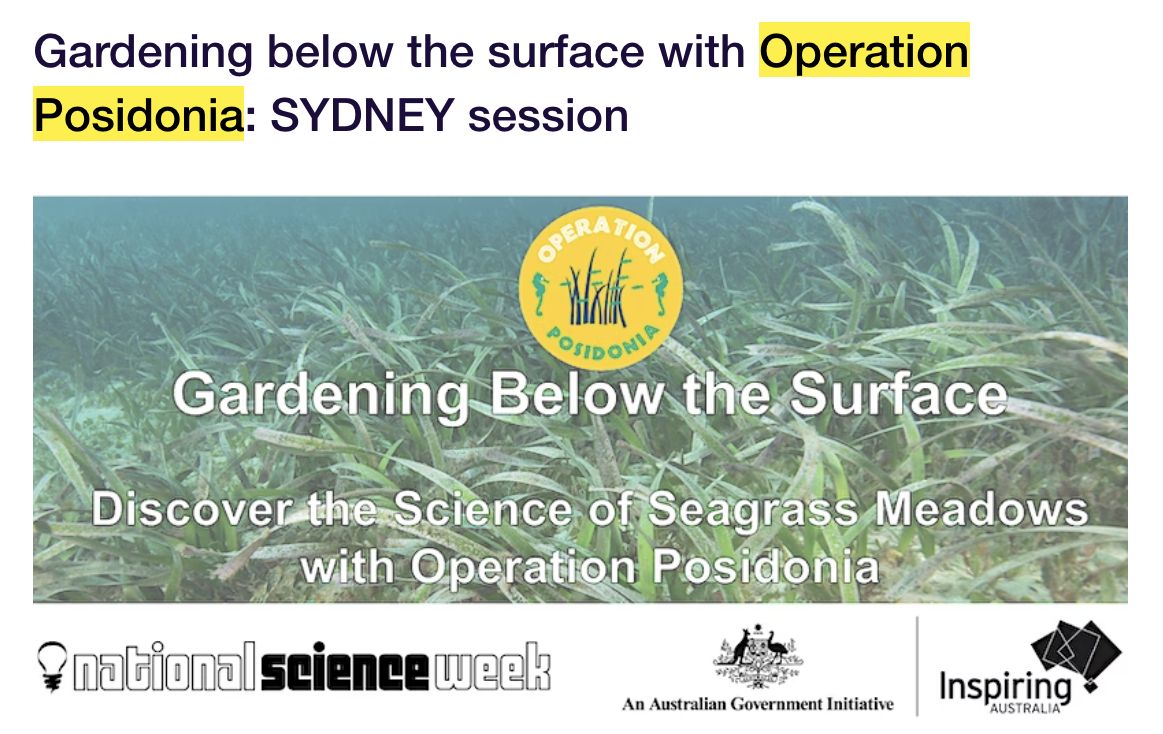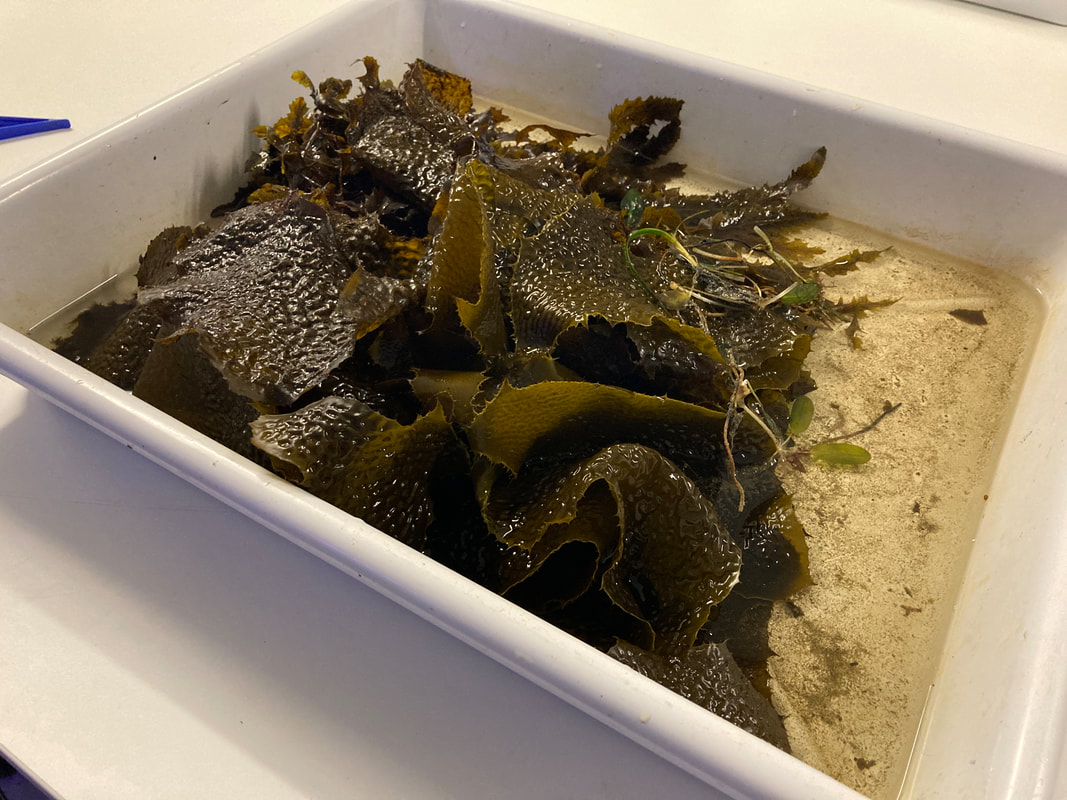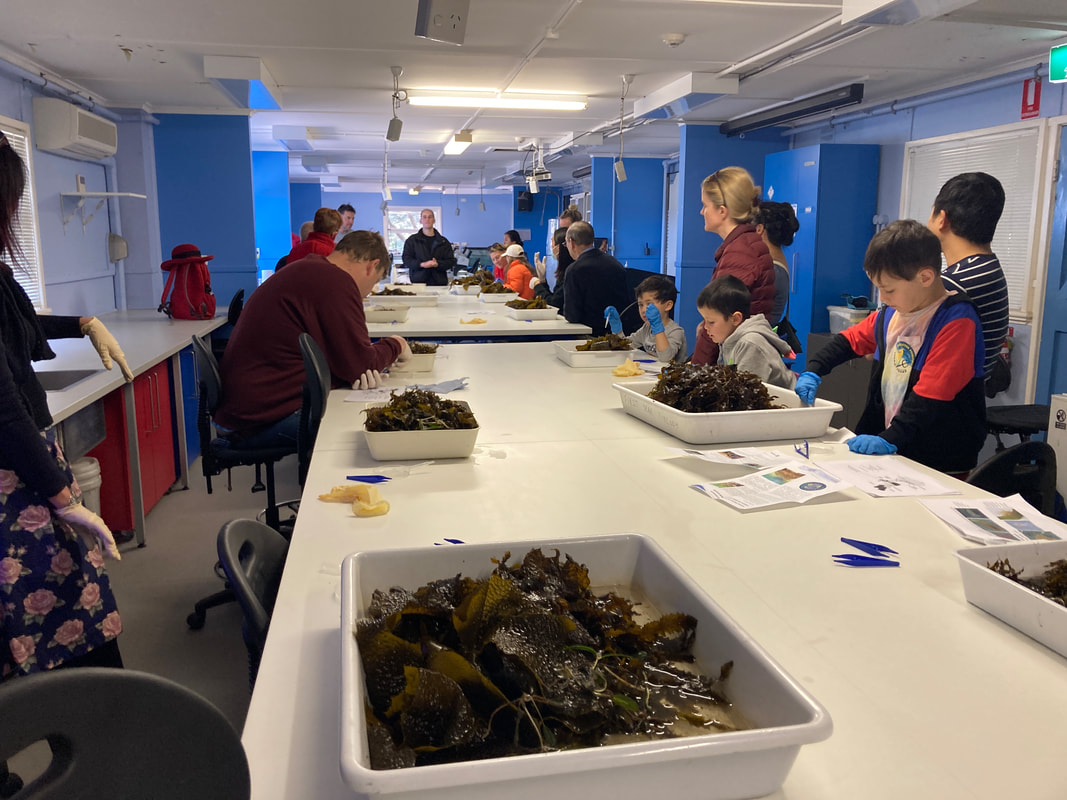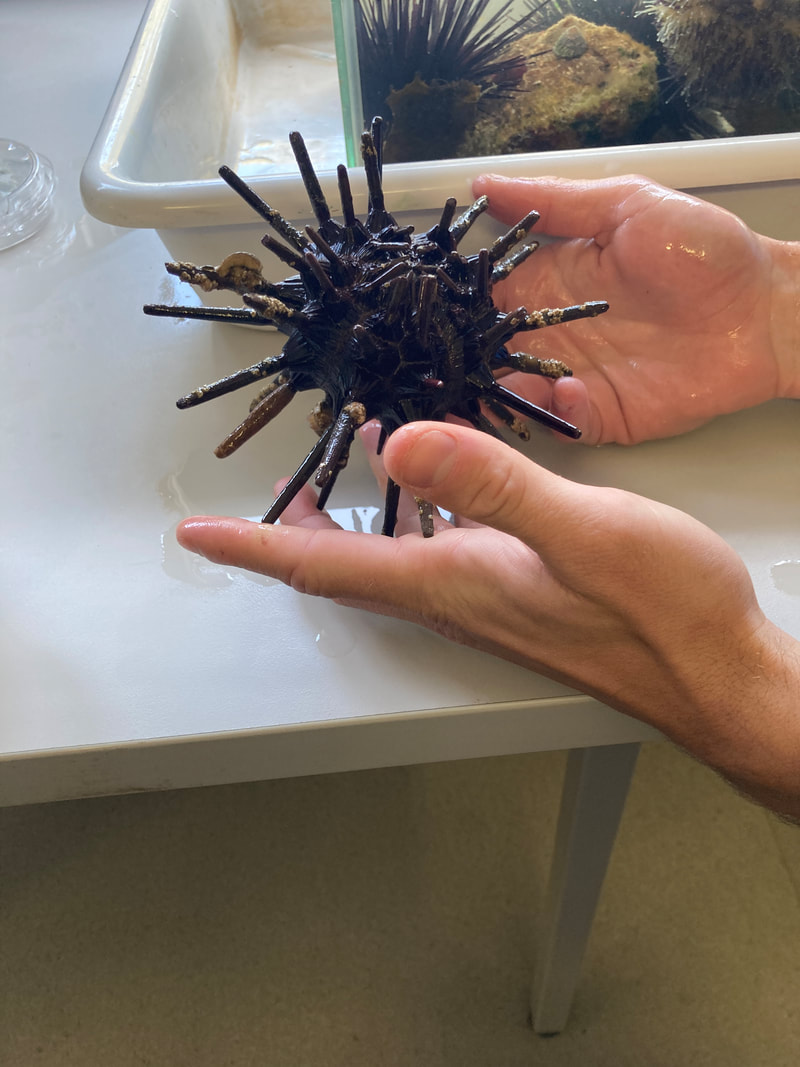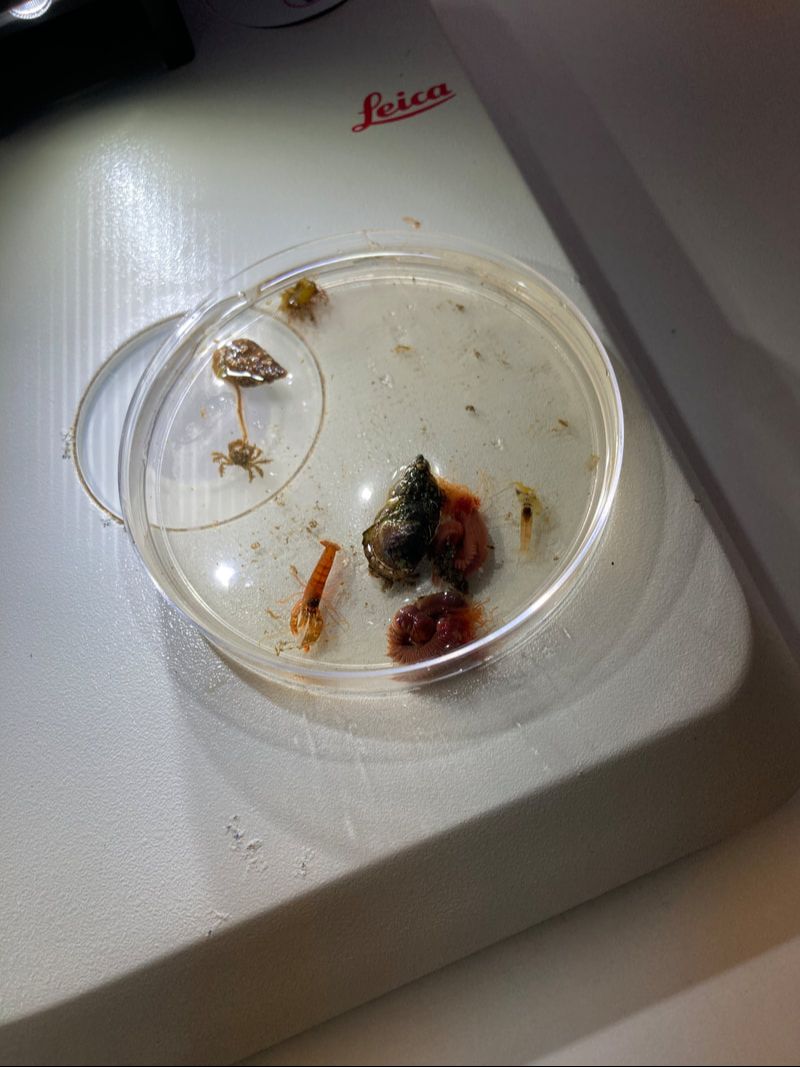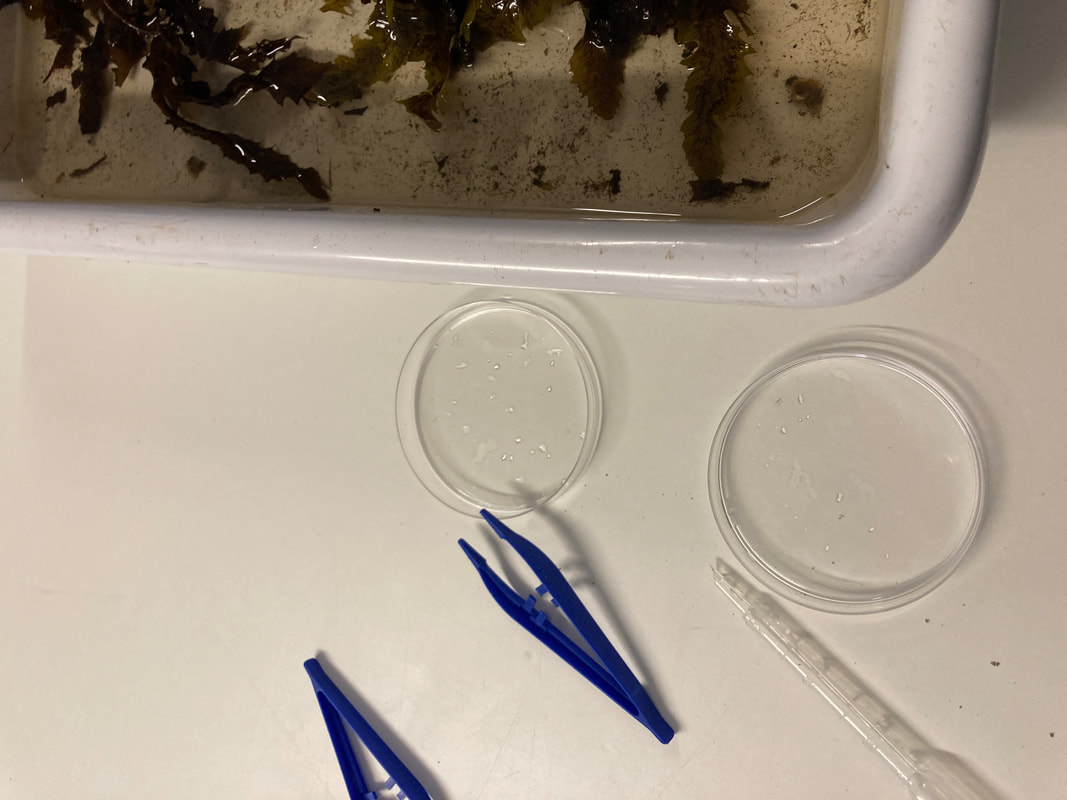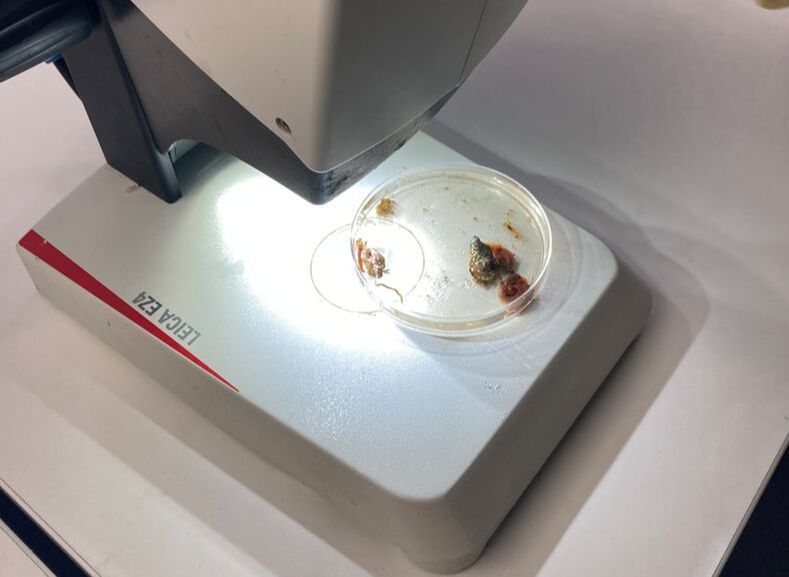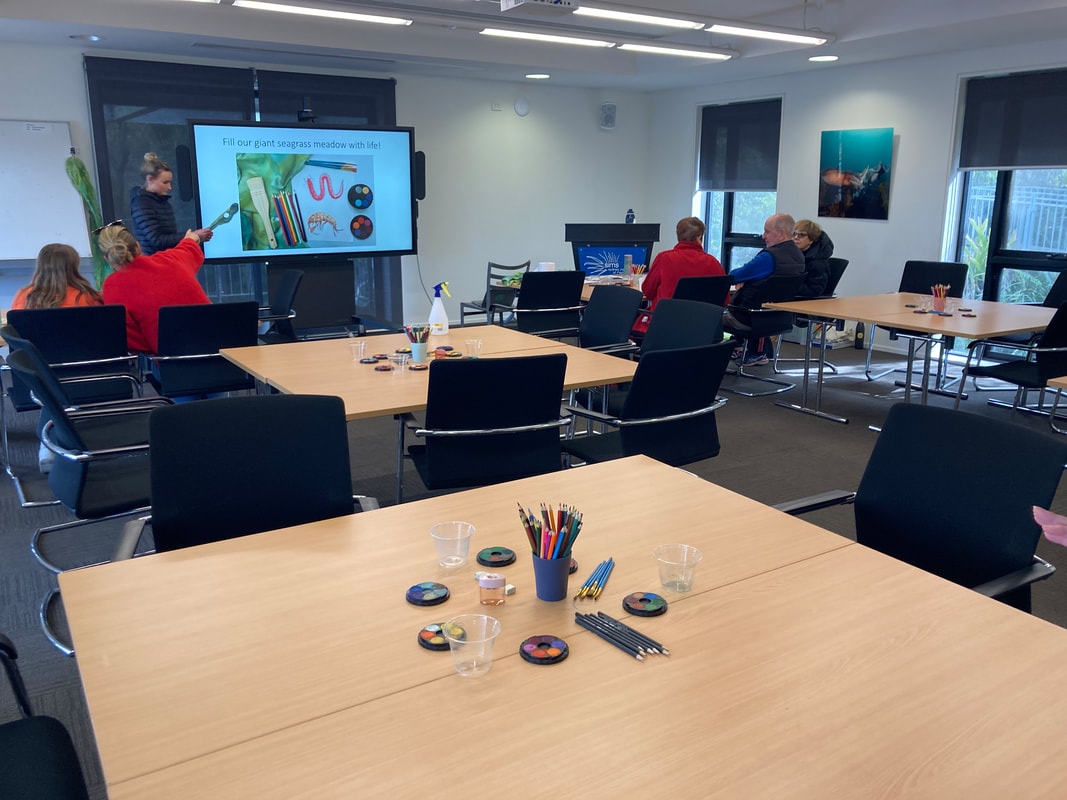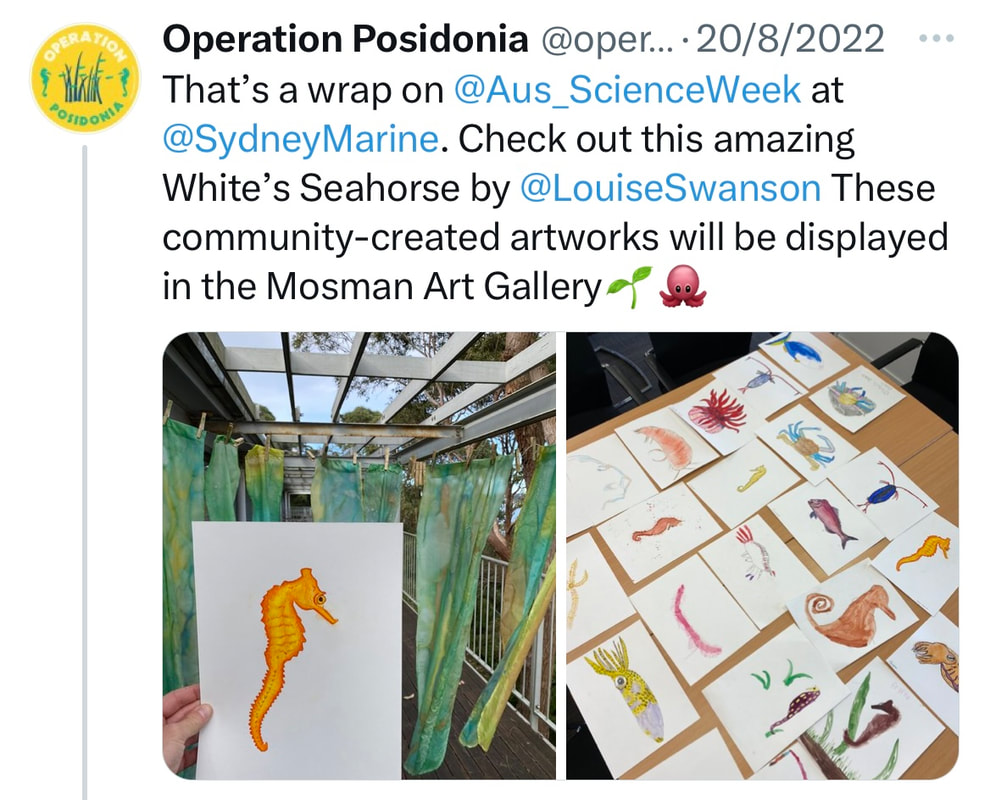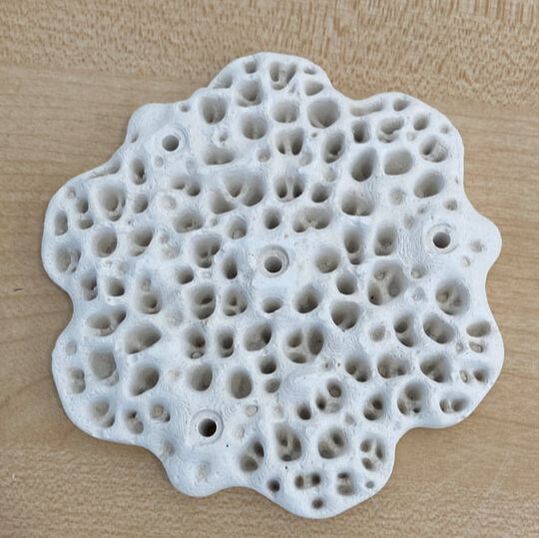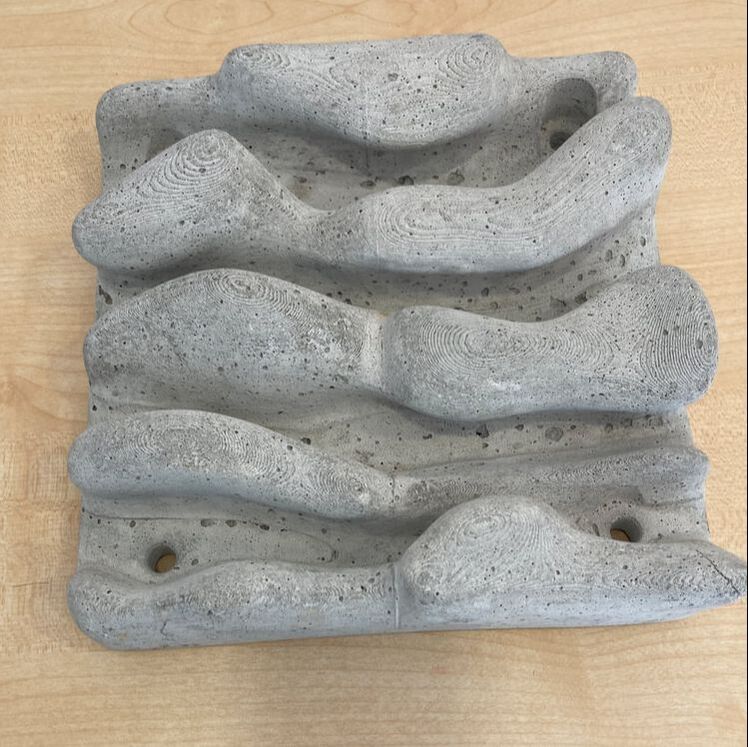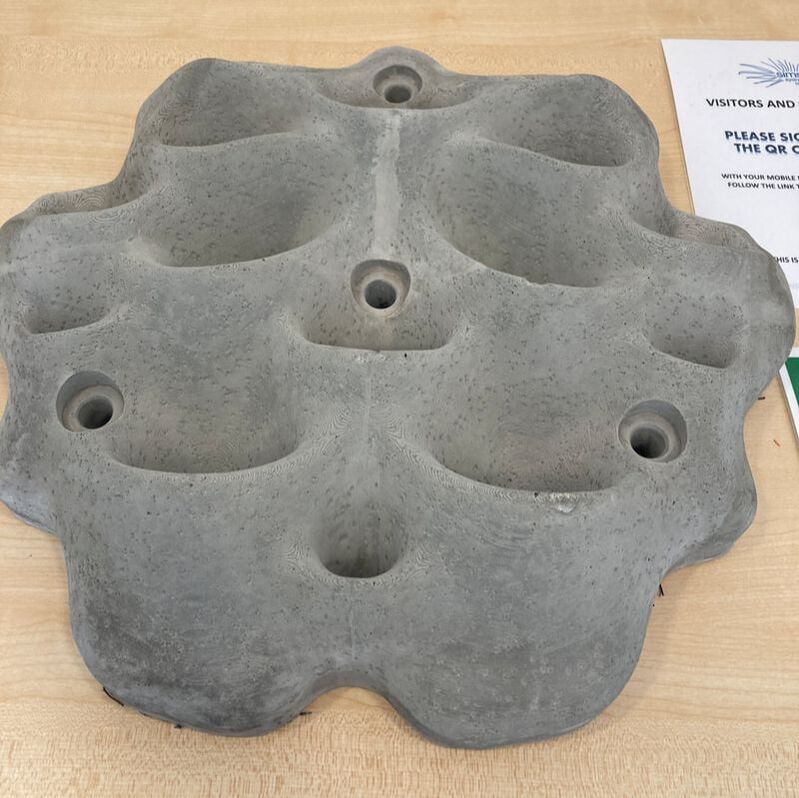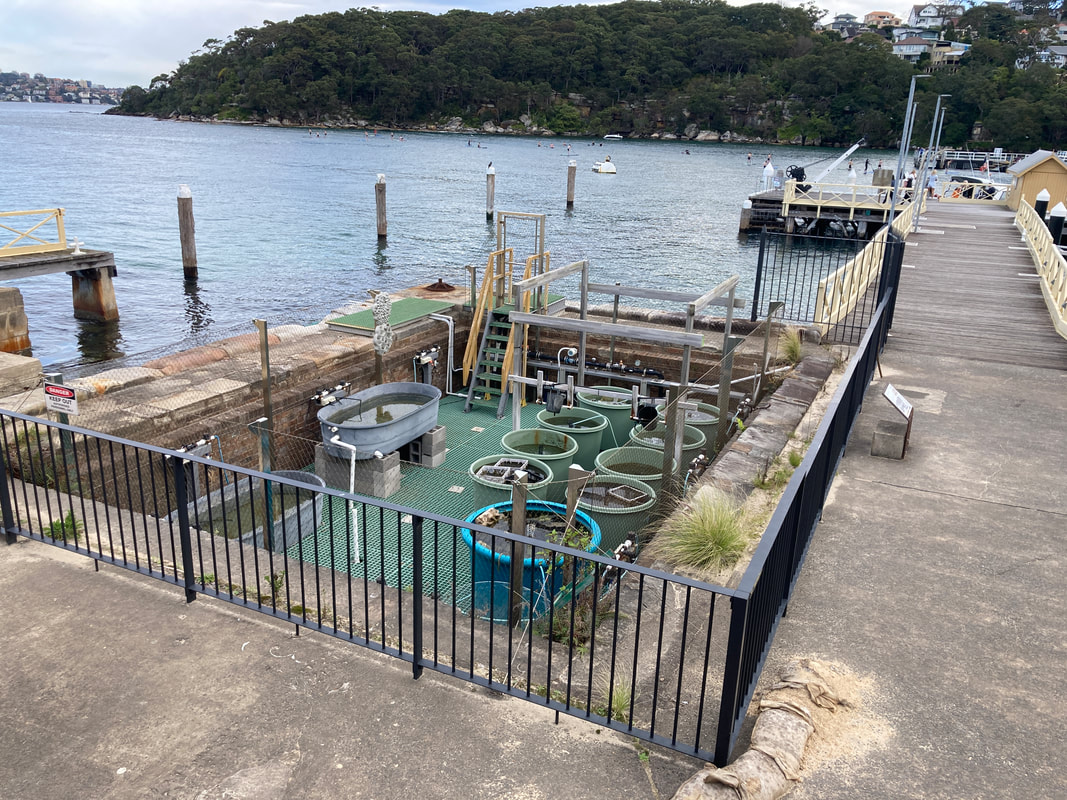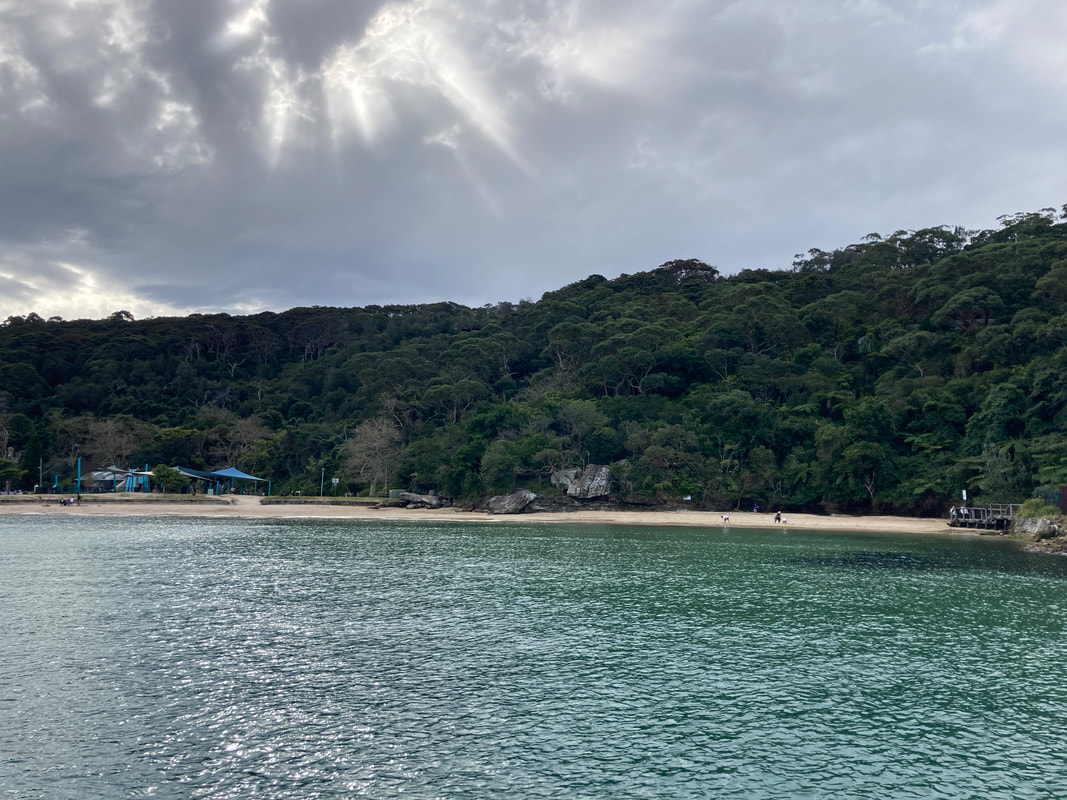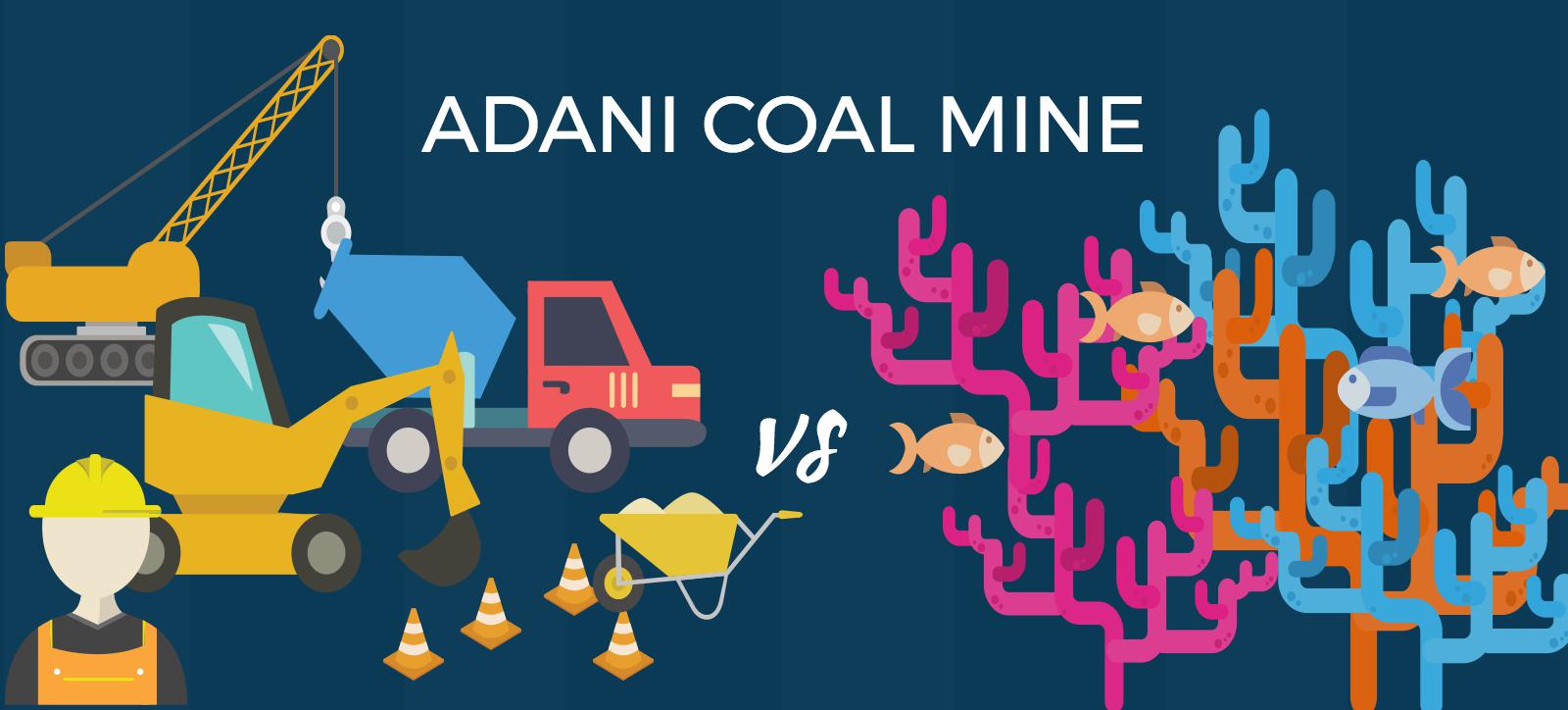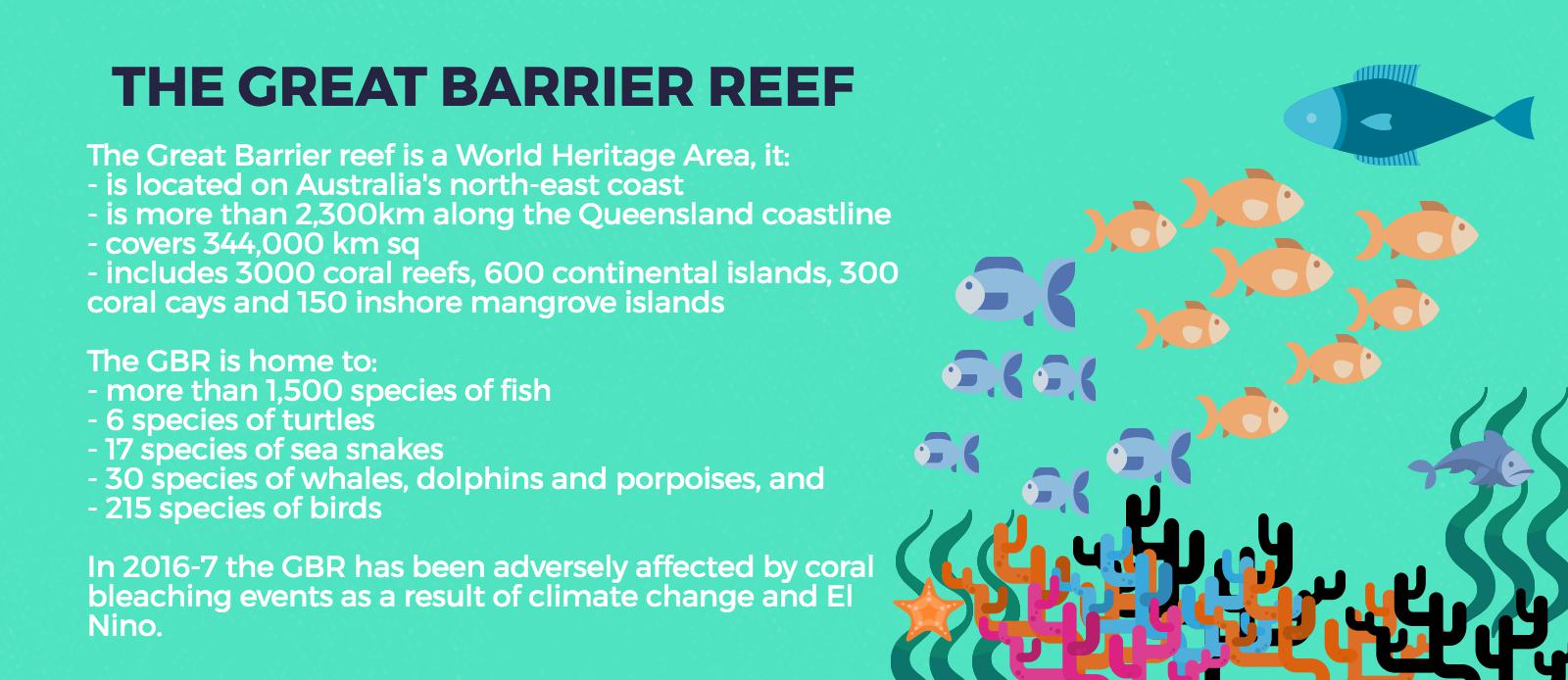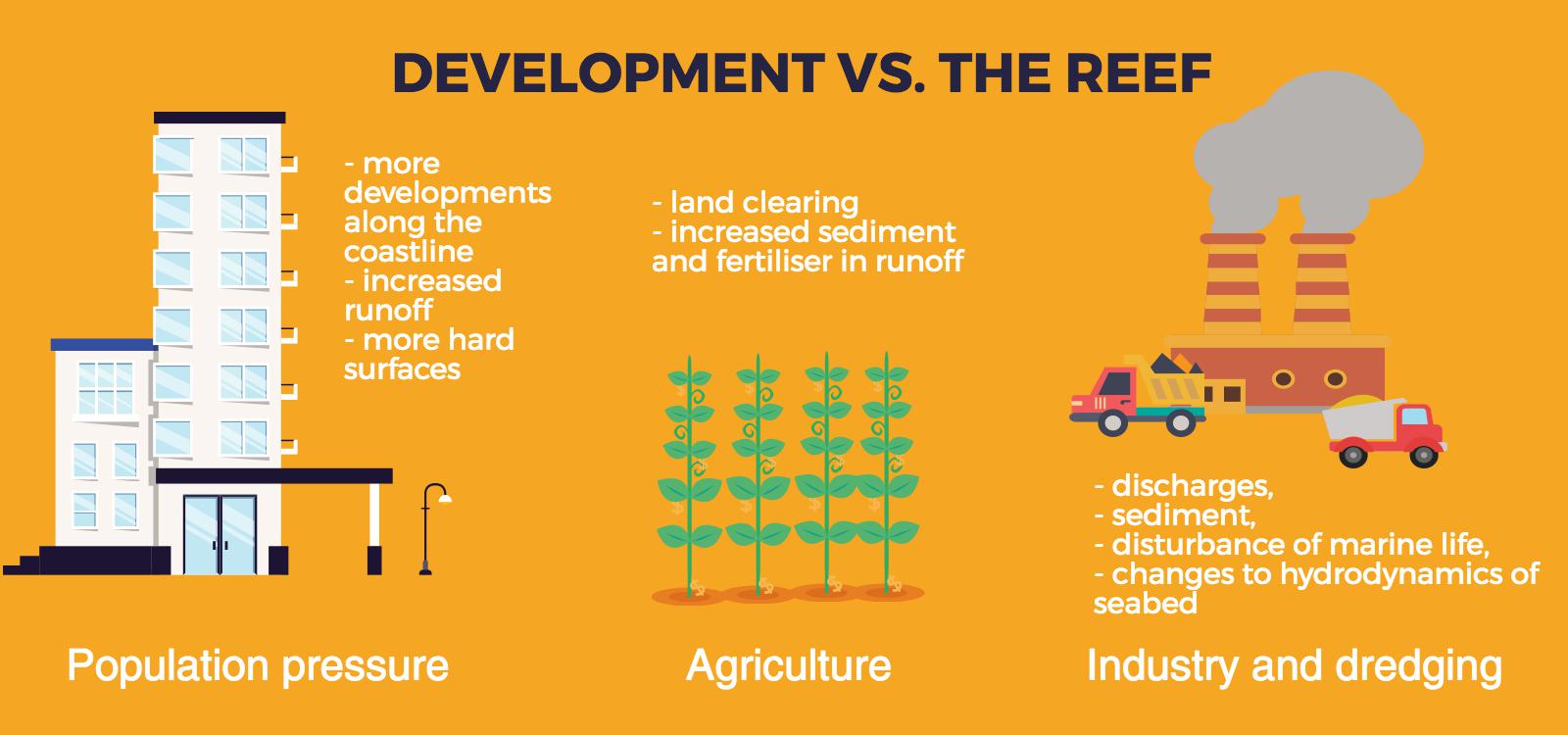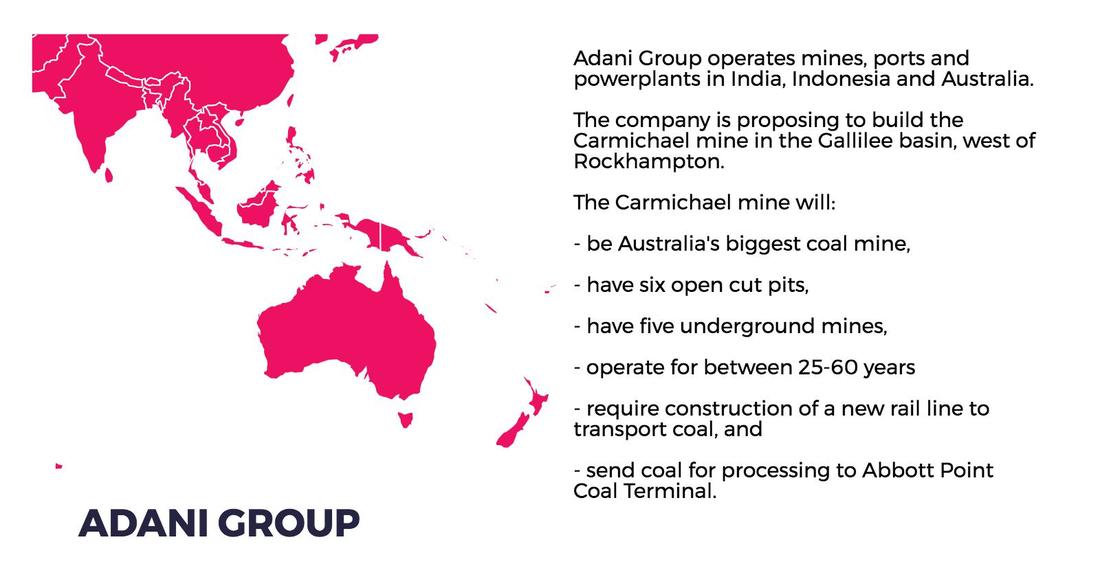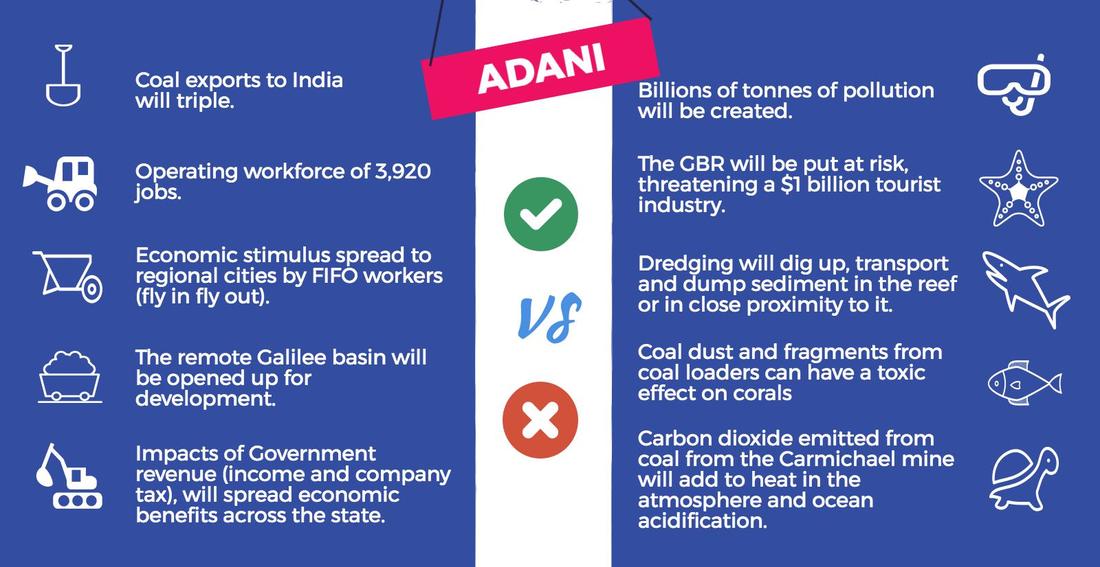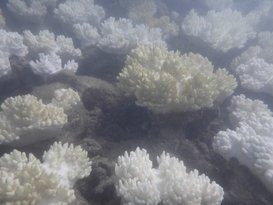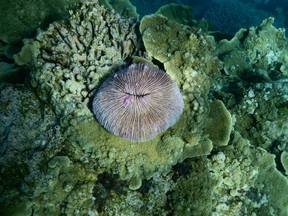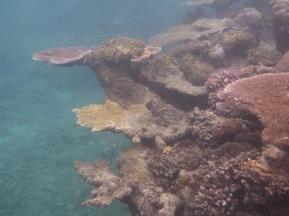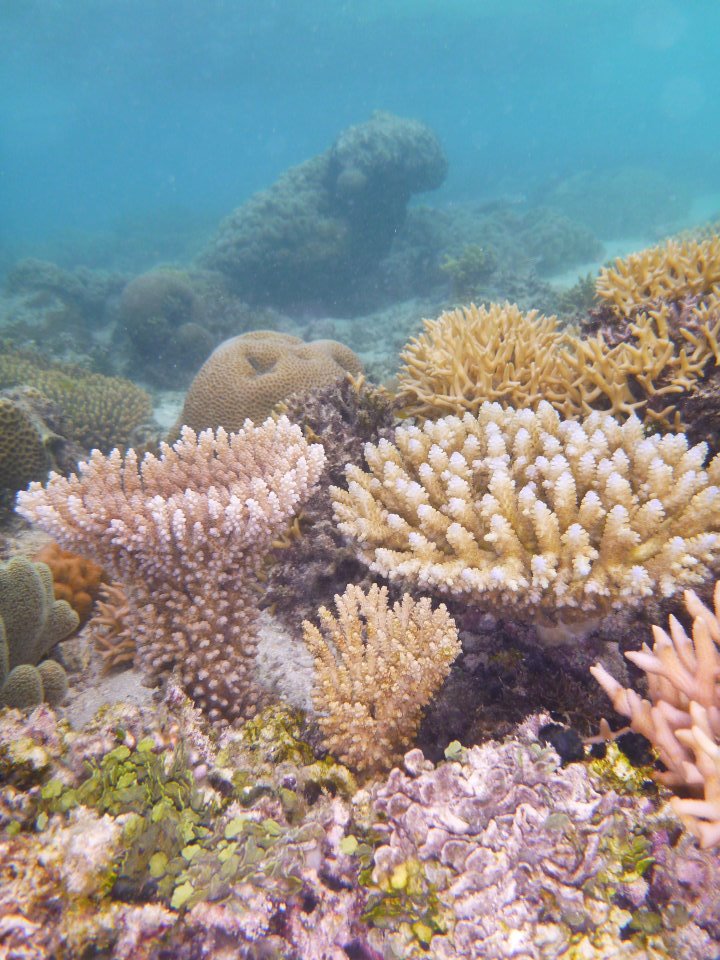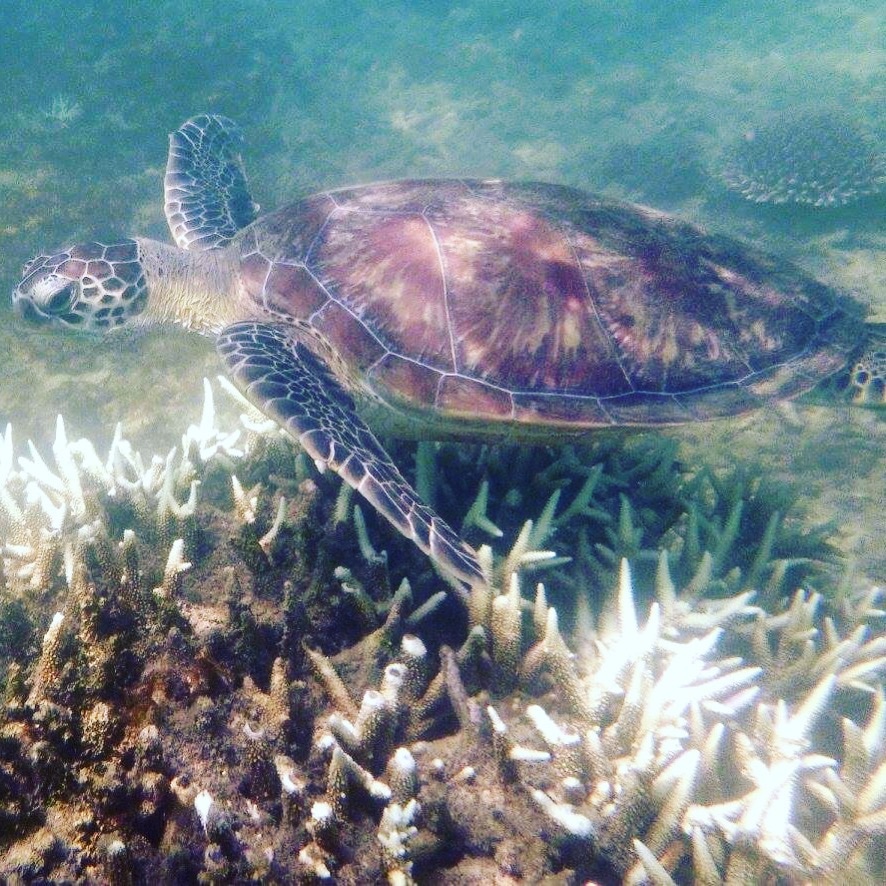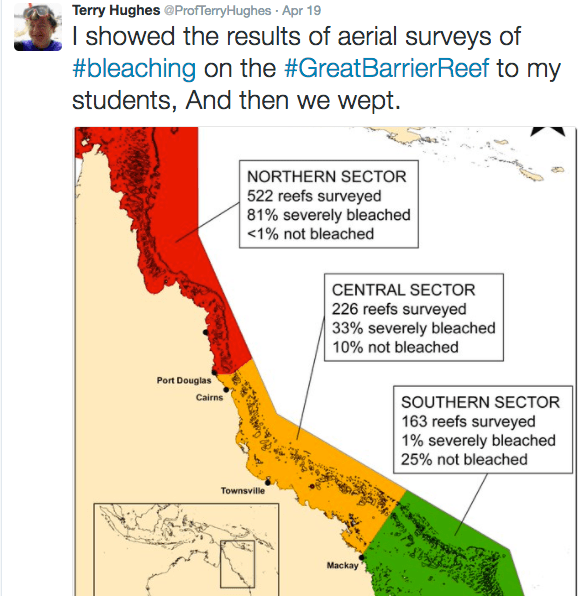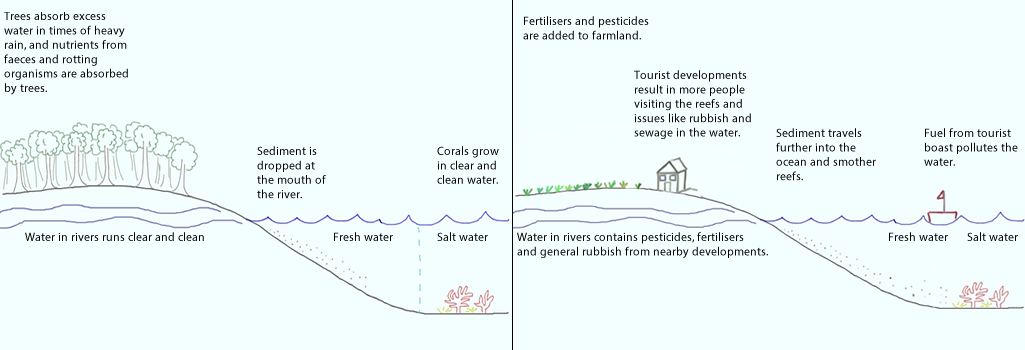|
As part of National Science Week, the Sydney Institute of Marine Science (SIMS) held sessions to raise public awareness about the fragile nature of seagrass meadows. Although this event was promoted as a Science event, it had clear links to the Geography syllabus - both the Year 10 Environmental Change and Management topic and the Year 9 - Biomes topic. SIMS is located on Chowder Bay Rd, Mosman. The session involved examining specimens form nearby Chowder Bay/Clifton Gardens, a tour of classroom facilities and a display of seawall panel designs. As information on the Great Southern Reef becomes more readily available, some of these activities would tie in really well with this case study of Geography classes. Seagrass and seaweed - there was a collection aquatic organisms which could be identified using a field chart and also facilities to exam them under the microscope Part of the day involved an art project to promote public awareness about seagrass. The artworks were transferred onto silks that had been dyed to represent seagrass. This became part of an installation at Mosman Art Gallery. You can read more about the art project here: https://www.lissfinney.com/public-projects There was also a display of seawall panels designed by Living Seawalls. These panels are designed to be adhered to seawalls to encourage biodiversity. The crevices are intended to encourage aquatic species to use the structure as habitat. You can read about Living Seawalls here: https://www.livingseawalls.com.au/ There is a testing area where the Living Seawall panels are being tested in Chowder Bay. The shark nets at this site are also a common place for snorkelers to find seahorses.
I'm definitely coming back for a closer look. This is one of several posts about our Balmain Foreshore Project. Read more... Balmain Foreshore Project - Introduction Gardening Below the Surface - Operation Posidonia Balmain Foreshore Project - Trial Activities Balmain Foreshore Project - Implementation Balmain Foreshore Project - Living Seawalls Balmain Foreshore Project - Living Seawalls: Pre-Installation Biodiversity Survey
0 Comments
There is a huge amount of information available about coral reef health and in particular the mass coral bleaching events that have occurred over the past two years. Two of my previous posts are linked below, but if you scroll to the bottom of the page there are a range of other articles, reports and websites regarding coral bleaching that you might find useful.
Previous posts: Mass coral bleaching events Coral bleaching - reef resilience Students should define the following key terms: - acclimatise - connectivity - recruit - adaptation - natural selection - symbiotic - zoozanthallae - parasite - photosynthesis Answer the questions below. Conduct internet research to find articles and reports which support your answers.
Resources: Coral bleaching - GBRMPA Coral bleaching and the Great Barrier Reef - ARC CoE Coral bleaching: Extreme heat pushes parts of the Great Barrier Reef beyond recovery - ABC Coral bleaching events - AIMS Great Barrier Reef: a "hopping hotspot" - Australian Geographic The changes in temperature and associated bleaching are resulting in a different mix of species on the reef. This will impact reefs in the long term.
Loss of species Fish, whales, dolphins, sharks, rays and the many other organisms found in reefs rely on the complexity of the ecosystem for survival. Some fish rely on the colour of the corals for camoflauge and the structure of the coral for hiding. Many organisms are unable to carry out normal functions and processes as a result of the increased ocean acidification associated with climate change. Shellfish are less able to create their shells due to increased pH. Slow growing corals will take 100-200 years to recover, meaning that the reef will not exist in the form that we have known it in the past. Dispersal of spawn Ocean warming impacts on the dispersal or coral spawn (eggs). Increased ocean temperatures result in a decline in the dispersal distance of coral spawn from the origin (parent coral) to the destination site. This change in dispersal patterns can impact on species' distribution, abundance or corals in particular areas and genetic diversity across reefs. Changes to dispersal patterns can also impact on the connectivity (interconnections) between different areas of the reef by limiting the areas of reef that particular coral species are located. Poleward shift of species Ocean warming can also result in a poleward shift of species from tropical zones to more temperate zones. Warmer waters are found further from the tropics and species are able to take advantage by increasing their range. In Western Australia, a species of wrasse - cheorodon rebuscens has started to shift its range with displacement of recruits south of its usual habitat. There is evidence of high recruitment at the temperate edge and no recruitment at the tropical edge. The range shift provides limited expansion opportunities, reducing resilience of the species. Irukandji are migrating further south on the Great Barrier Reef as a result of warmer waters and are also having longer seasons in other areas. There have been anecdotal reports of increases in reports of stinging and hospitalisations on islands within the Great Barrier Reef (e.g Fitzroy Island) and snorkellers are being strongly advised to wear stinger suits outside of usual peak Irukandji seasons. Irukandji and associated stingings have also been reported on western side of the southern tip of Frazer Island where they haven't previously been found. Symbiotic relationships Following bleaching events or even natural disasters, corals can become overgrown with algae, making it difficult for coral recruits to settle and grow. The mix species on a reef can impact on how resilient that particular reefs is. For example in Moorea in French Polynesia experienced high coral mortality in the 1980s. Recovery of the reef was enabled in part as a result of grazing fish such as parrot fish removing some of the algae in the process of eating corals. In this way the biodiversity of the reef contributed to high levels of resilience on the reef in comparison to some other reefs globally. The scale of the bleaching on GBR make it unlikely that these types of natural processes will have much of an impact on recovery. Below: A parrot fish on the outer reef, 2015. 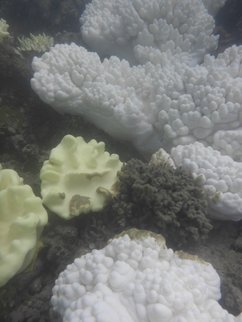 I had the pleasure of hearing Professor Terry Hughes present as part of the Sydney Ideas talks being run by the University of Sydney. Professor Hughes is Centre Director at the ARC Centre for Excellence for Coral Reef Studies at James Cook University. I use the term "pleasure" because I am a big fan of his work, and think that some of the visual representations that he has created have been incredibly powerful in explaining coral bleaching to students, but actually the information presented was really quite depressing. Image left: Photograph of bleached corals at Fitzroy Island April 2017. Hughes described some of the main drivers of degradation of coral reefs: pollution, overfishing and climate change. He explained how overfishing had resulted in the reduction of stock sizes for different species in the past century, how pollution from inland activities resulted in coral mortalities and encroachment of different ecosystems like mudflats in areas previously thriving with corals. He went on to say that the scale and extent of these changes were being dwarfed by the immediate and irreparable changes being wrought by back to back bleaching events. Below right: Bleached coral on Fitzroy Island April 2017. Mass bleaching events have occurred in both 2016 and 2017 as a result of increased ocean temperatures. The bleaching is as a result of corals expelling their symbiotic algae. Coral bleaching tends to occur after the summer temperature maximum, and relates to where the hottest water is. In 2016 coral bleaching severely bleached the northern third of the Great Barrier Reef, the middle section was bleached to a lesser extent, but still quite severely, while the bottom third of the reef largely escaped bleaching in 2016. This was established by the surveying of 1160 reefs through 9000km of aerial surveys, and 75 hours of flying. The 2017 bleaching event impacted the central section of the GBR, while the bottom third is again largely unbleached. Cycle Debbie, a chance weather event, lowered temperatures in the southern part of the reef, which contributed to reducing bleaching in this section. The combination of both the 2016 and 2017 bleaching events has been extremely damaging. There have been reports that the recent cyclone that affected Queensland, Cyclone Debbie may play a role in reducing the impact of coral bleaching. It was reported in the Cairns Post that the cyclone would reduce ocean temperatures, bring cooler waters to the surface and increase cloud cover, thus reducing bleaching, providing stressed corals with an opportunity to recover. The Cairns Post reported that temperatures off Lizard Island had dropped by three degrees and that this would reduce the severity of bleaching. It also provided quotes from a free diver describing the amazing colours and marine life of the outer reef. In reality, as already stated Lizard Island and the top third of the Great Barrier Reef were already severely affected by bleaching in 2016 (well before Cyclone Debbie) and were again affected in 2017. In any case, the path of the cyclone was too far south to have any real impact on areas severely affected by bleaching. Will the Great Barrier Reef recover? There is a narrow opportunity for limited recovery, but the Great Barrier Reef as we know it (complexity, extent, etc) is already dead in many areas. It will continue to exist but with reduced biodiversity. Any real opportunities to protect the reef as it remains is reliant on halting temperature increases and stabilising the climate through reducing reliance on fossil fuels. With negotiations underway between the Australian Government and Adani for for the creation of the Marmichael mines this seems highly unlikely. For more detail on coral bleaching see my article in this term's GTA NSW HSC edition of the Bulletin. http://www.gtansw.org.au Symbiotic relationships Symbiosis is a long term relationship between two organisms. There are three types of symbiotic relationship: mutualism (where both organisms benefit), commensalism (where one species benefits, but there is no benefit or harm to the other species), and parasitism (where one organism benefits tot he detriment of the other). There are many examples of symbiosis on coral reefs. Corals and zooxanthallae The relationship between the corals and the zooxanthallae is beneficial to both. Corals provide the zooxanthallae with an environment suitable for survival. It is moist and the coral's waste gives energy to the zooxanthallae. Through the process of photosynthesis the zooxanthallae produce compounds that the coral use for food. Clownfish and Sea Anemones The Sea Anemones have tentacles with stinging cells. These stinging cells kill many organisms and it is in this way the anemones get their food. Clownfish hide in amongst the tentacles of the Sea Anemone, but are not harmed by them. In this way the clownfish are protected from other predators. Occasionally the Clownfish will catch food for the Sea Anemone. Sharks and Remoras Sharks sometimes get parasites which live on the external surface of the shark. Remoras are cleaner fish, and they attach themselves to the shark and kill the parasites. When the shark feeds the Remora are able to eat the scraps from the feed. Watch the videos below, and take notes about the following symbiotic relationships: - Christmas tree worms and porites corals - Coral shrimps and corals - Goby shrimp and Hawaiian Shrimp Goby - Cleaner Wrasse and cleaning stations •Coral Reefs support a large number of plants and animals. •Coral Reefs are built by millions of tiny animals called polyps. •Some coral polyp species receive more than 60% of their food from algae. •Each coral colony begins life as a single polyp, which then reproduces itself as a single polyp, which then reproduces itself by budding or by dividing. Types of coral reefs There are eight main categories of corals: branching, corals with meandering ridges and valleys, massive or thick colonies, thin plates and crusts, solitary/isolated/free-living corals, coral with large, daytime expanded polyps, column corals and blue/fir/organ pipe/lace corals. Some examples of coral are found below: Where are coral reefs found? Special conditions are needed for reef-building corals. Coral reefs will only grow in waters warmer than 18oC, and no deeper than 50metres. Therefore coral reefs are limited to clear, shallow tropical seas found either side of the equator. Corals may not develop properly in waters that receive freshwater runoff or sediments from rivers.
This is part of a unit of work for Changing Places - Australia's Urban Future.
Lesson 1: Australia's Projected Population Growth Lesson 2: Implications for Future Growth and Sustainability Lesson 3: Sydenham to Bankstown Urban Renewal Precinct Lesson 4: WestConnex - Sydney, Sustainability and Transport Lesson 4: Sydney Sustainability and Transport (Teacher's Notes) Lesson 5: The GreenWay Lesson 5: Deindustrialisation Lesson 6: Create an infographic Lesson 7: Contributing to a Sustainable Urban Future Lesson 7: WestConnex - Protest Movements and Impacts Lesson 7: Conflict Over Dulwich Hill OR See the complete unit on the Changing Places website. Stage 5 Geography - Changing Places In the previous 7-10 syllabus in Environment Issues there was a section of content where students were asked to investigate individual, groups and government responses to an issue. In the new NSW syllabus this has been removed. However, in Stage 4 Changing Places the issue of WestConnex protests (or some other protests) can be used to address the inquiry questions:
Students can examine transport networks as both a cause and consequence of urbanisation (see previous post - WestConnex - Sydney, Sustainability and Transport) Students can also use it to examine the following content dot points:
Below: The St Peters West Connex site.
Stage 6 Geography - Urban Places/Urban Dynamics In a previous post I wrote about how WestConnex could be used as a way of exploring growth, development, future trends and ecological sustainability for a Sydney case study in the urban dynamics section of the HSC course. Another way this issue could be used in this course would be to use it to explore the culture of place of a suburb like Haberfield. There have been a variety of articles regarding the nature of the suburb in terms of heritage architecture, noise, and street life, and how this has and will change as a result of WestConnex. There are also a number of articles regarding the development site at St Peters and the removal of established trees on Sydney Park. This could also be used as a way to ask problematic questions such as: - What is the cost of development?, - What kind of Sydney do we really want? - Do the benefits to the city/commuters outweigh the costs to others? - Will the project really releive traffic in the long term? 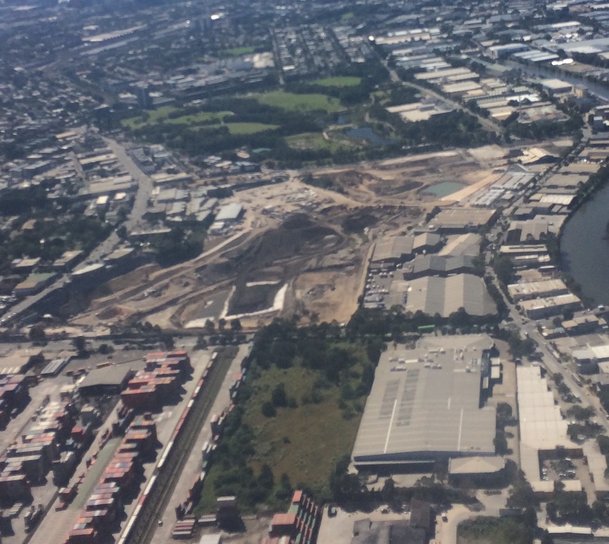
Students can do this through the lense of community protests to examine how different groups and individuals perceive how WestConnex (both a consequence of and a response to urbanisation - i.e a response to traffic congestion, the need for transport infrastructure) impacts their community and/or environment. In the previous syllabus there was a lot of scope to do activities such as mock council meetings, mock letters to Members of Parliament, etc. A simple search on Youtube brings up many recorded meetings regarding the project. This is an ideal scenario to use in class to reenact (or participate in) this process. While NESA/BOSTES has not completed a rewrite of the Civics and Citizenship Australian Curriculum, we can assume it will be relatively similar based on the rewrites of 7-10 History and Geography. In Civics and Citizenship (AC) students examine how citizens participate in direct action and lobbying (Year 8) and how and why individuals and groups participate in and contribute to civic life (Year 9). This provides a perfect example to explore these kinds issues and to build on student knowledge in Civics and Citizenship. Resources Below is a list of links to articles and websites related to WestConnex protests. You will notice that some of these are from media outlets such as Green Left Weekly and Alt Media. In a previous post on WestConnex most of the links I provided were government websites. The two posts together provide a more balanced approach to the issue and any lesson to students should include a range of perspectives and encouraging students to do their own analysis and make their own conclusions. WestConnex: Protesters clash with Police over 800 tree-deaths Protesting businesses in Newtown and Enmore stick it to WestConnex Haberfield homes acquired for building of WestConnex Three month closure of Ramsay Street Haberfield Talking WestConnex and Mike Baird ignoring compulsory aquisition reforms WestConnex private contractors sell items from heritage homes ahead of demolition Clover Moore supports protesters at 24-hour-a-day camping blockade... WestConnex protesters arrested as Sydney Park trees come down. Protesters Clash with WestConnex workers How the 15.4b WestConnex will affect Sydney residents Baird's new protest laws used against WestConnex protesters Protests grow over WestConnex Stop WestConnex WestConnex Action Group Social media is a tool that students are very familiar with and use for a variety of personal and social purposes. If we can tap into students' enthusiasm for and ability to use social media we can easily harness it to enhance student learning. Recent coral bleaching events have been discussed widely on twitter by experts and organisations that study and work to protect coral reefs. Some examples of experts and organisations to follow on twitter:
Twitter lesson 1
Investigate the differences in people’s views about the causes of environmental issues such as coral bleaching and ocean acidification. Take screenshots of a range of different views about this issue. Refer to the information about environmental worldviews from previous lessons. Make an inference about the environmental worldview that each person holds. Why do you think this? Justify your answers. What are your thoughts and opinions about this issue? How do your thoughts reflect your own environmental worldview? Twitter lesson 2 Create a Storify that shows the progress of discussions, research, campaigns and decisions related to the management of a coral reef. Use the tweets and the links contained in them as a starting point for a geographical inquiry. This may help you to pose questions, planning an investigation, collecting secondary information. In doing so, consider:
Population pressure
Increased population pressures on mainland North Queensland have resulted in increased levels of pollution and physical activities related to tourism on the reef area. Tourism The outstanding beauty of the reef attracts millions of tourists each year. The pressure placed on the reef as a result of tourism includes developments on the shoreline (and associated sewage, rubbish) increase boating activity (including oil spills, coral breakage as a result of boat propellers), and tourist activities (breaking corals while snorkelling, walking on reefs, accessing sensitive areas). Agriculture (particularly Sugar cane farming) Agriculture, especially sugar cane farming on the mainland, has resulted in increased sediment and fertiliser run-off from cane farms. In recent years, a downturn in global prices for sugar cane has resulted in farmers using greater amounts of chemicals. These chemicals run off into coastal streams and result in algal blooms and eutrophication in some areas of fringing coral near the mainland. Sugar cane farmers apply fertilisers containing Nitrogen (N) and Phosphorous (P). Many put on extra fertiliser in case of heavy rain (so it is not all washed away). The introduction of bananas as a crop in the area further increased the use of fertilisers. Of all fertilisers applied, only a third is absorbed by the crops. The rest is either evaporated, enters groundwater or runs off into nearby rivers or canals. Sugar cane crops need water to be drained away quickly. If the crops are left in water the roots will rot. As a result canals were built to drain water away quickly from the crops in case of heavy rain. These canals, or drains, reverse the cycle of how wetlands are meant to function. Rather than regulate and slow the flow of water, the water is quickly moved away from the site and into main river systems. The water rushes off the land carry fertiliser, soil, pesticides, etc. Actually pinpointing the sources of sediment is difficult, but it is believed that most is coming from land which has been tilled and let lie fallow. Sediment is also coming from bank erosion. Since European settlement erosion has accelerated due to clearing of land (less tree to stabilise soil). Due to erosion the river can erode into paddocks. There is believed to be four times more sediment reaching the coast than prior to European settlement, and in some places it is closer to 40 times. Fishing Recreational and commercial fishing have had major impacts on the reef. Commercial prawn fishing accounts of a large proportion of Queensland's Fisheries output. Approximately 6 million kgs of prawns area harvested in a good year. Recreational fishing in the General Use zones of the Great Barrier Reef Marine Park (GBRMP) accounts for 75% of the fin fish taken from the reef each year. Commercial fishing includes fishing for crayfish, finfish, reef fish, barramundi and tuna. An examination of one net which washed ashore showed it contained 14 turtles, a shark and a dugong. Gamefishing has long been an important industry in North Queensland. Pisciculture is a trend involving raising fish in fish farms (e.g. tiger prawns and barrmundi). Dredging Dredging is removing sediment from the bottom of a river bed, harbour, etc and placing it elsewhere. Links: Abbot Point: Dredging dumping permitted within Great Barrier Reef waters Abbot Point approval: Tour operators disappointed by Great Barrier Reef dredge spoil decision Approval of Galilee mega mine leaves Reef strategy in tatters. Landuse impacts on Great Barrier Reef water quality and ecosystem condition Dredging set to swamp decades of Great Barrier Reef protection WWF - Queensland resources sector needs leadership |
Categories
All
Archives
May 2024
|
